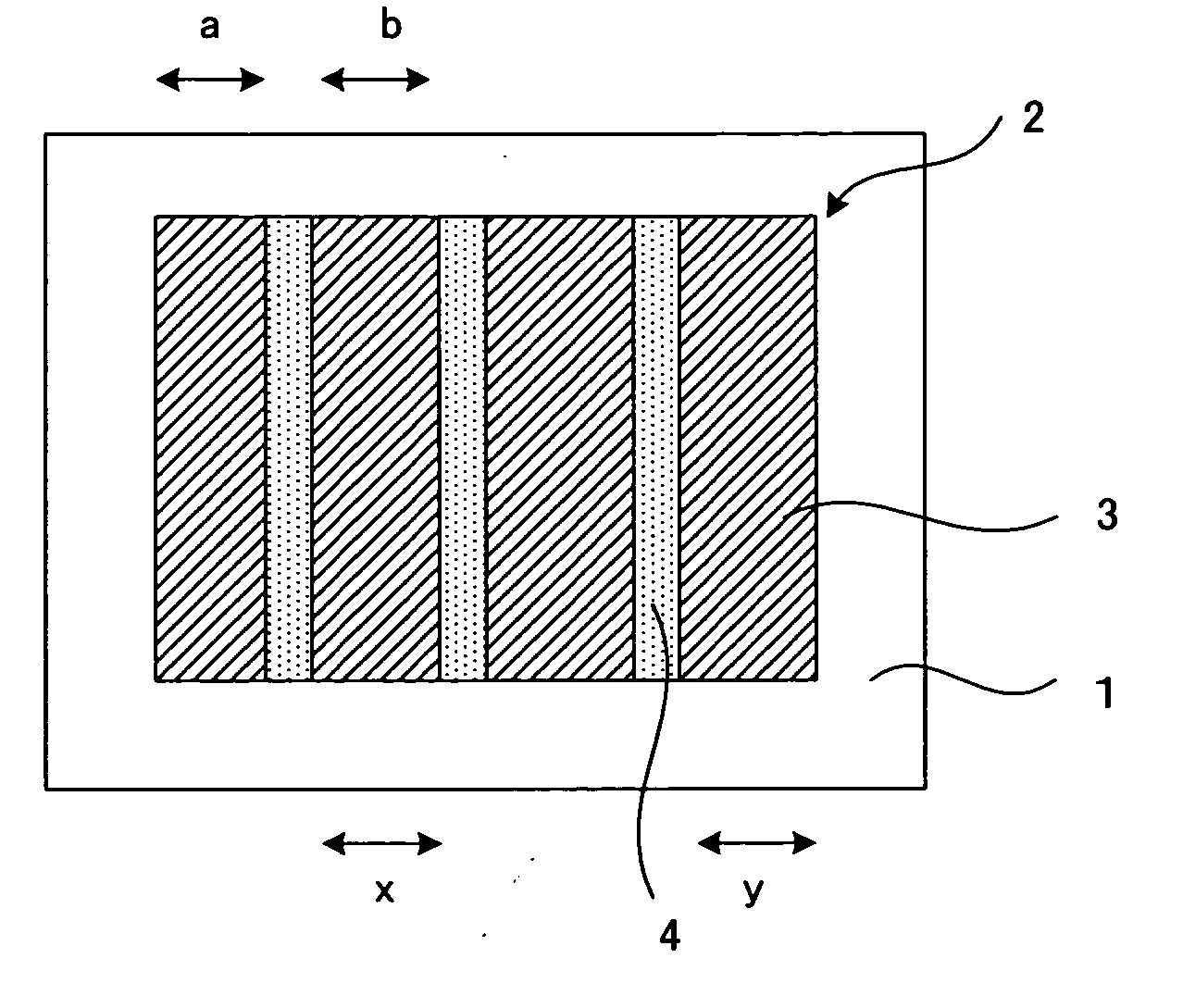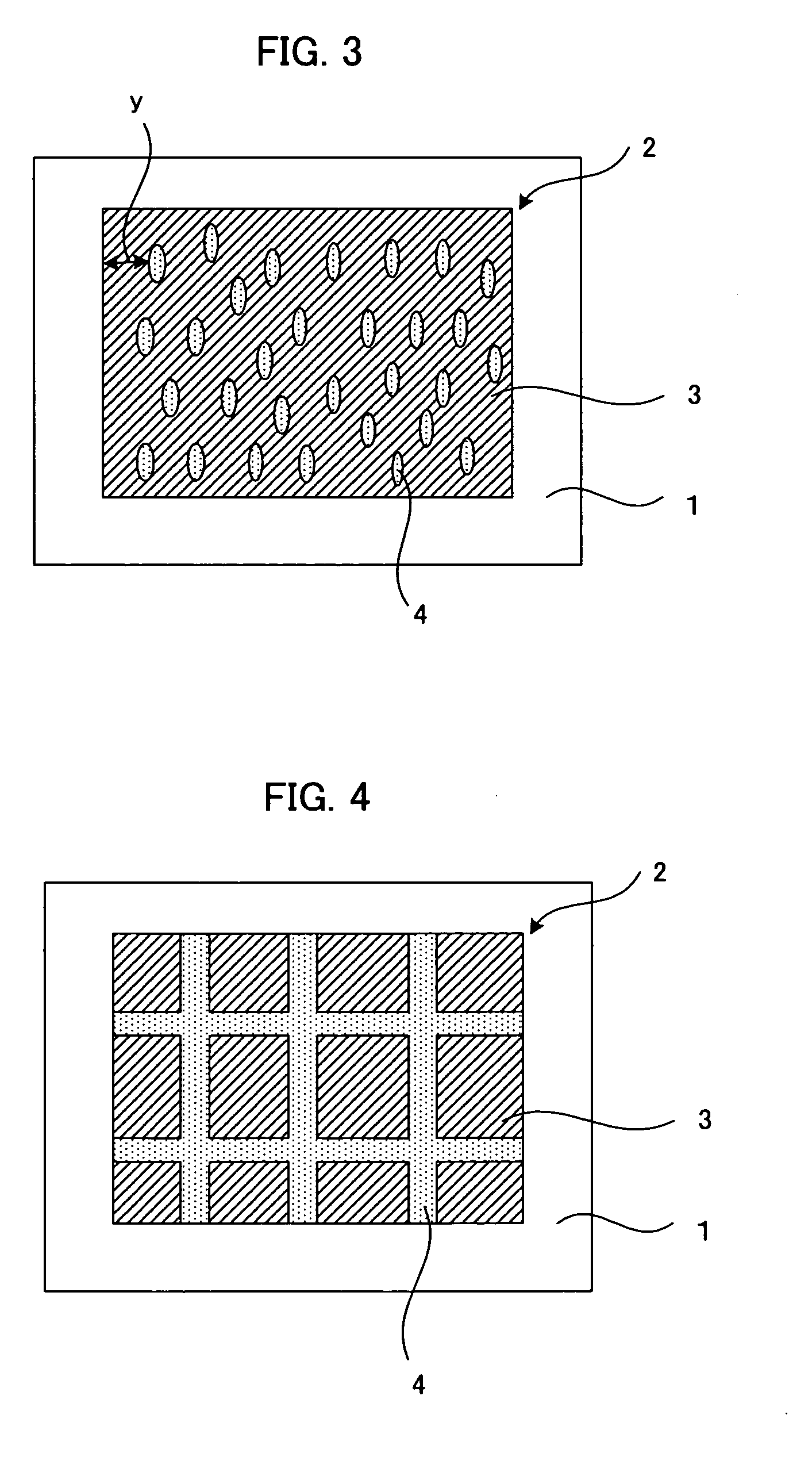Cell culture patterning substrate
a cell culture and substrate technology, applied in the field of cell culture patterning substrates, can solve the problems of failing to form tissue in the center part, poor arrangement of cells, and inability to survive for a long period under flotation conditions out of organisms, etc., and achieve excellent arrangement and short time over a large area
- Summary
- Abstract
- Description
- Claims
- Application Information
AI Technical Summary
Benefits of technology
Problems solved by technology
Method used
Image
Examples
first embodiment
A. First Embodiment
[0037] Firstly, a first embodiment of the cell culture patterning substrate of the present invention will be explained. The first embodiment of the cell culture patterning substrate of the present invention is a cell culture patterning substrate comprising: a base material; and a cell culture region which is formed on the base material, is a region for culturing a cell and contains a cell adhesive layer having adhesive properties to the cell, [0038] wherein the cell culture region comprises: a cell adhesion portion at which the cell adhesive layer is formed; and a cell adhesion auxiliary portion, formed in a pattern, which inhibits adhesion to the cell, and [0039] the cell adhesion auxiliary portion is formed such that, upon adhesion of the cell to the cell adhesion portion, the cells on two cell adhesion portions adjacent to the cell adhesion auxiliary portion can be bound to each other on the cell adhesion auxiliary portion.
[0040] The cell culture patterning su...
second embodiment
B. Second Embodiment
[0227] Now, the second embodiment of the cell culture patterning substrate of the present invention is described. The second embodiment of the cell culture patterning substrate of the present invention is a cell culture patterning substrate comprising: a base material; and a cell culture region which is formed on the base material, is a region for culturing a cell and contains a cell adhesive layer having adhesive properties to the cell, wherein an edge part of the cell adhesive layer is formed in a pattern with concavoconvex.
[0228] As shown in FIG. 12 for example, the cell culture patterning substrate in this embodiment is a cell culture patterning substrate having a base material 1 and a cell culture region 2 formed on the base material 1, wherein the edge part “a” of a cell adhesive layer 7 formed in the cell culture region 2 is formed in a pattern with concavoconvex.
[0229] As described above, when cells are allowed to adhere to the cell culture region, the ...
example 1
(Formation of a Photomask Having a Photocatalyst-Containing Layer)
[0242] A photomask having line & space of 60 μm / 300 μm with openings of 60 μm in width and light-shielding portions of 300 μm in width, wherein the boundary between the opening and the light shielding portion is formed so as to have concavoconvex of 1 by 1 μm square, was formed.
[0243] Then, 5 g of trimethoxymethylsilane TSL8114 (manufactured by GE Toshiba Silicones) and 2.5 g of 0.5 N hydrochloric acid were mixed and stirred for 8 hours. The mixture was diluted 10-fold with isopropyl alcohol to prepare a primer layer composition. This primer layer composition was coated onto the patterned surface of the photomask by spin coating, and the substrate was dried at a temperature of 150° C. for 10 minutes to form a primer layer thereon.
[0244] Then, 30 g of isopropyl alcohol, 3 g of trimethoxymethylsilane TSL8114 (manufactured by GE Toshiba Silicones), and 20 g of a photocatalyst inorganic coating agent ST-K03 (manufactu...
PUM
| Property | Measurement | Unit |
|---|---|---|
| average distance | aaaaa | aaaaa |
| size | aaaaa | aaaaa |
| size | aaaaa | aaaaa |
Abstract
Description
Claims
Application Information
 Login to View More
Login to View More - R&D
- Intellectual Property
- Life Sciences
- Materials
- Tech Scout
- Unparalleled Data Quality
- Higher Quality Content
- 60% Fewer Hallucinations
Browse by: Latest US Patents, China's latest patents, Technical Efficacy Thesaurus, Application Domain, Technology Topic, Popular Technical Reports.
© 2025 PatSnap. All rights reserved.Legal|Privacy policy|Modern Slavery Act Transparency Statement|Sitemap|About US| Contact US: help@patsnap.com



